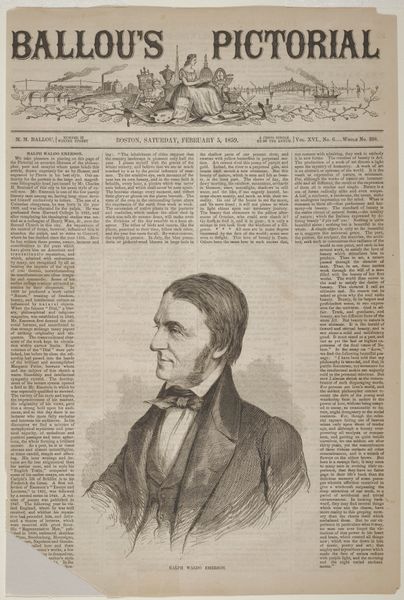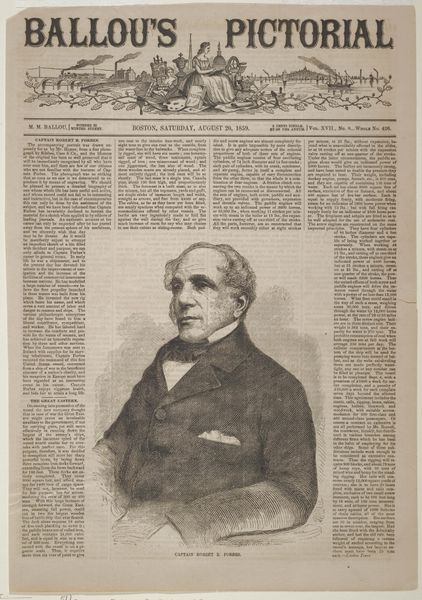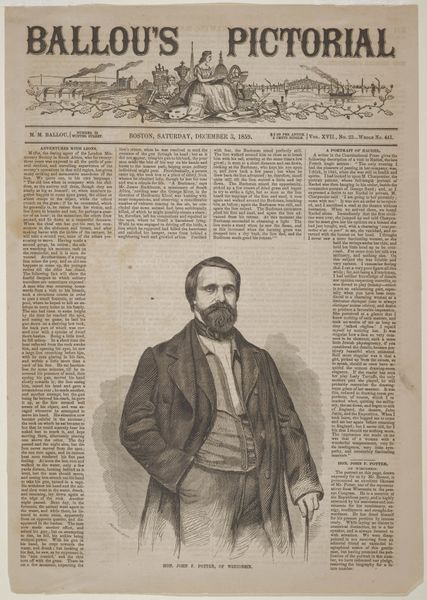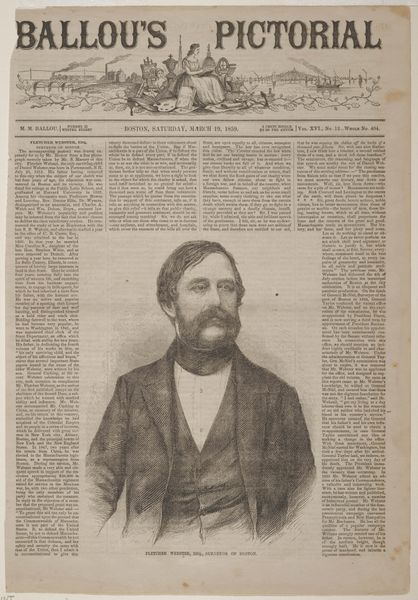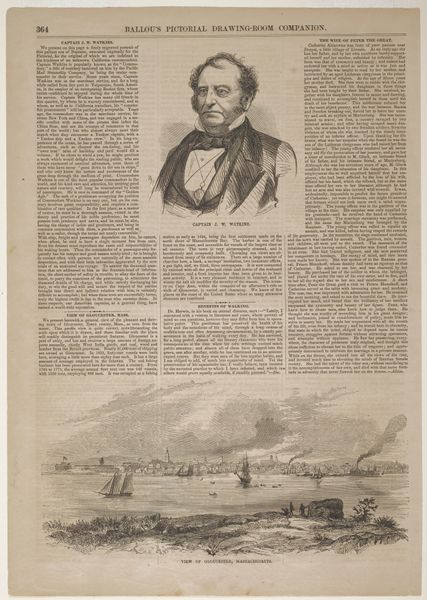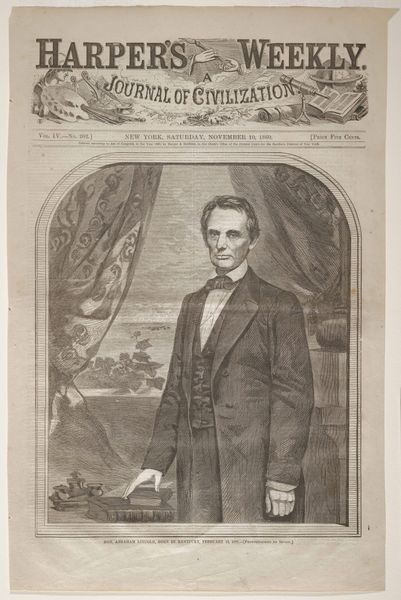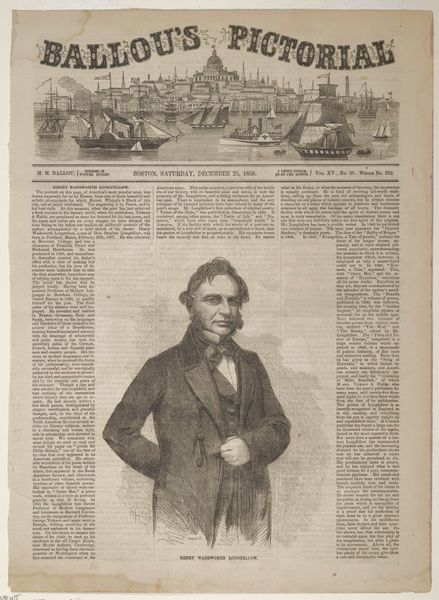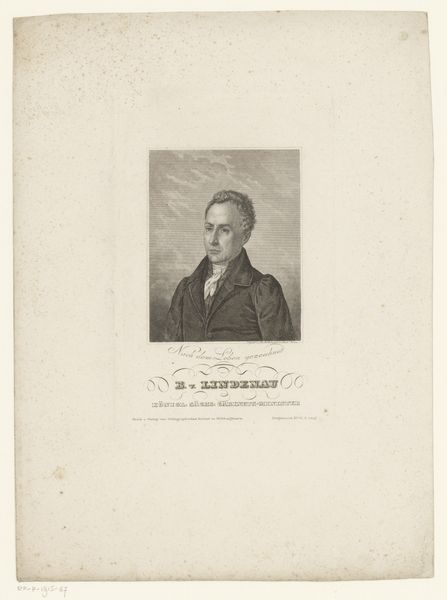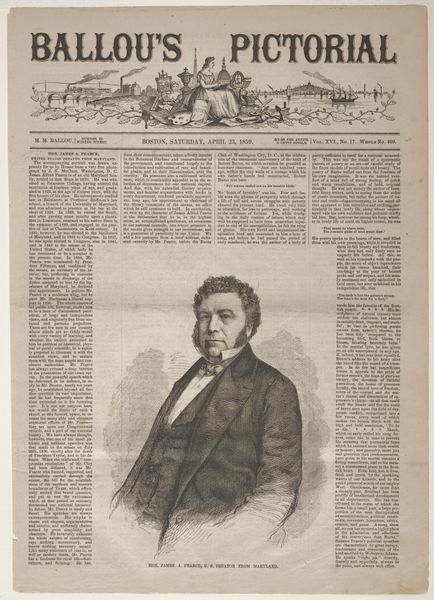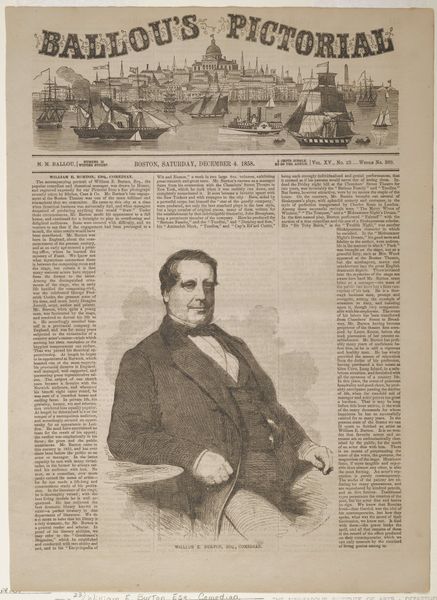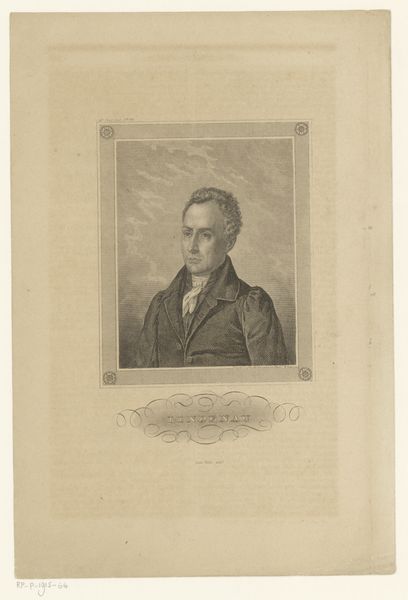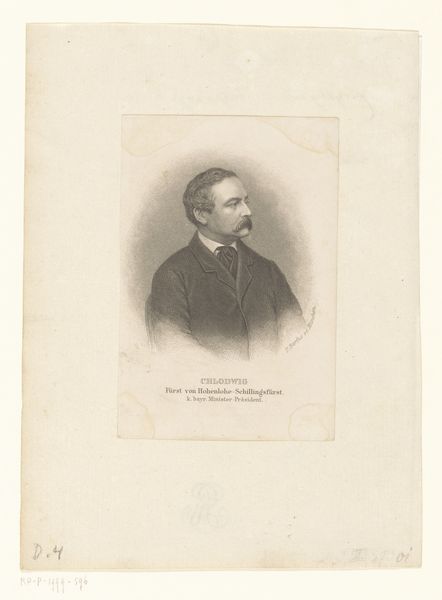
print, woodcut, wood-engraving, engraving
#
portrait
# print
#
woodcut
#
wood-engraving
#
engraving
Dimensions: 7 7/16 x 5 15/16 in. (18.9 x 15.1 cm)
Copyright: Public Domain
Curator: This image is a wood engraving of Paul Morphy by Winslow Homer, published in 1859. The way the figure is integrated within the text creates a really interesting dynamic. Editor: It's striking how this portrait exists both as image and text. How does the medium, the wood engraving itself, affect our understanding of the subject and its context? Curator: That's a brilliant question! Consider this: wood engraving, while capable of great detail, was a method employed primarily for mass reproduction at this time. Homer wasn’t creating high art, in the traditional sense, but producing an image meant for consumption. The printing press played a critical role. So, the wood engraving allows a widespread readership to form an idea of a Chess Champion like Paul Morphy through an image. Does this impact the artist, Homer, in any way? Editor: Yes, he is implicated in the popular culture through the printing and consumption practices. The process itself renders Morphy a kind of commodity. We aren't encountering the "real" Morphy but a printed image intended for mass consumption. Curator: Exactly! Furthermore, wood engraving demands particular skills. What impact do you think it has on how the artwork is received by the viewer and how Homer may have worked or innovated with the medium? Editor: So it forces us to reconsider traditional hierarchies of artistic skill by calling attention to both material practices and also commercial pressures. The circulation of the artwork seems equally as important as what is depicted in the image. Thanks! Curator: Indeed, a vital recognition that art exists through the system of its making! It changes how we approach understanding visual representation and its link to commerce and labour!
Comments
No comments
Be the first to comment and join the conversation on the ultimate creative platform.
